#Fabric-Batik-Paint-Dye
Text
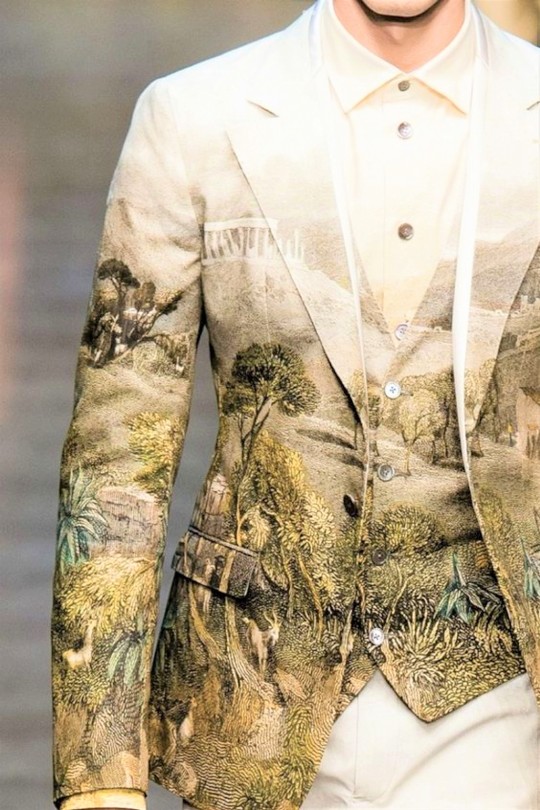
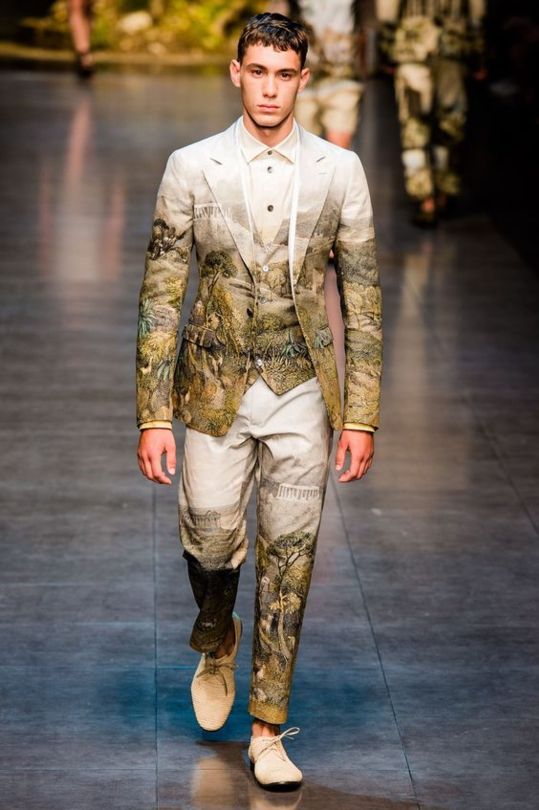
Dolce & Gabana 2014 | Painted Fashion - Wearable Art
There’s something about painted clothes that makes them very special. Regardless of whether you buy them already painted or you paint them yourself; wearing items that were touched by an artist’s brush is a great style statement. Clothes that are painted (for real, not as a print) are generally unique items: there can’t be two alike, which makes them a great thing to wear if you want to convey a message about originality through your clothes.
Images from Vogue
#painted fashion#fabric art#textile art#wearable art#fashionable passions#fabric-batik-paint-dye#crafts#art
4 notes
·
View notes
Text

An Early Morning Bath At the River ~ batik painting on cotton ~ Exotic India Art
“Wax painting is an art form dating back 2,000 years. Wax Paintings were found in the tombs of Pharaohs and called "mummy portraits". The Indonesian word “Batik” means “wax writing”. In our modern day society wax resist art is usually referred to as “Batik”. The process is also referred to as “Rozome” in Japan. The Japanese version of batik consists of direct application of dyes and wax on silk using silk painting techniques. The Indonesian technique, usually uses cotton or silk and the wax is melted and applied using brushes or tjanting tools to the areas that are to remain that particular color then cloth is immersed into dyes and only the unwaxed areas accept the dye. This wax resist process of waxing out areas and dipping is repeated numerous times. Tjanting tools are made of a wooden shaft with a metal reservoir with a tiny metal tube that allows wax to flow onto the fabric leaving lines or dots. The waxed areas get bent and the cracks or fractures allow the dye to penetrate leaving fine lines of color referred to as “crackle” or “ice”. Janet refers to the crackle as the thumbprint of batik. Some batiks incorporate pastels, silk screening with fabric paint, acrylic paint, colored pencil and other mix media. The wax is removed through ironing the fabric between newsprint which absorbs the wax. The finished batik is dry mounted onto foam core, matted and framed.” ~ from Searfossdesigns
24 notes
·
View notes
Text



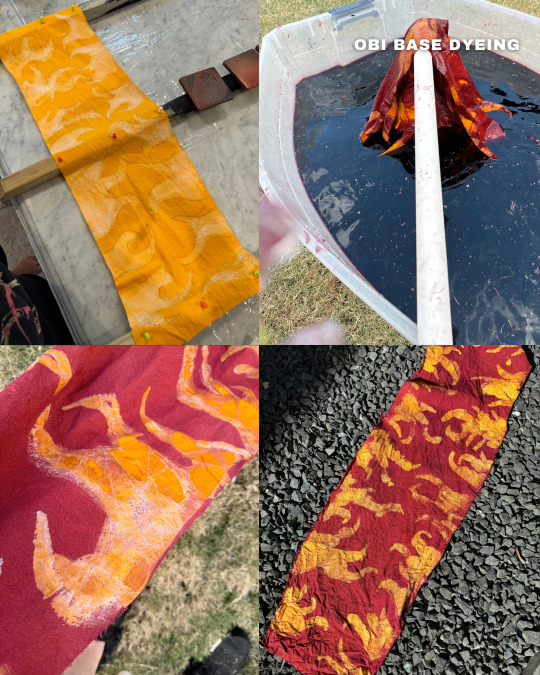

Medicine Seller (Mononoke) Progress - Kimono + Obi: How I Made It
👾 SLEEVES 👾
These are entirely made of damaged or used kimono — and every piece is also dyed to be a similar shade/tone, so the whole thing has deep colors and is cohesive! I got my kimono from Tangerine Mountain kimono and Yoko Beverly Hills primarily; anything not cut or unused was donated to others. All patches are fused with mistyfuse, then sashiko’d on by hand. Fun fact: all the sashiko patterns are tied with the earth or spirits, with the Seven Treasures of Buddhism for the purple, waves of grass for the green, and ocean waves for the blue!
👾 KIMONO FLOWERS 👾
The white flowers were stenciled with Jacquard textile paint in white, before I mixed sodium alginate (a dye thickener) with Dharma Trading Co ’s Teal Blue fiber reactive dye and blended the outlines, making it look a bit more “worn”.
👾 OBI 👾
This was, by and far, the most challenging thing I’ve ever done. I decided to batik (or wax resist) the obi. I started with white raw silk, dyed Golden Yellow with fiber reactive — vinegar has to be added for it to stick better to silks. I then applied the Jacquard wax by brush (all 4 yards of fabric, bless Dharma Trading Co for their amazing brushes), and then — to prevent the yellow from going orange — did another HEAVY wine colored dye bath (Burgundy dye with a touch of Deep Space), LOTS of salt and vinegar to overwhelm the yellow, and it WORKED! I did over 15 different dye tests for this and it WORKED!
👾 KIMONO 👾
This started as the rayon/linen blend fabric from Dharma Trading Co in white. The whole thing was dyed with their fiber reactive dye in Teal Blue, then, I did arashi shibori, or pole-wrapping shibori, with the dye in Navy and Deep Space.
13 notes
·
View notes
Text
Boho Chic Jacket Gems: Must-Have Pieces for Your Wardrobe
In the world of Craft Bazaar fashion, the bohemian aesthetic has enduring appeal, embodying free-spiritedness, individuality, and an effortless sense of style. Among the essential elements of boho fashion, the jacket stands out as a versatile piece that adds character and flair to any outfit. Whether you're strolling through a music festival, attending a casual brunch, or simply embracing everyday adventures, a boho chic jacket can elevate your look to new heights. In this guide, we explore must-have boho chic jackets that deserve a place in your wardrobe.
Embroidered Denim Jackets:
Denim jackets are a timeless staple, and when adorned with intricate embroidery, they become quintessentially bohemian. Look for jackets featuring vibrant floral patterns, geometric motifs, or ethnic-inspired designs. These jackets effortlessly blend casual charm with artistic flair, making them perfect for both daytime outings and evening gatherings.
Fringe Suede Jackets:
Nothing epitomizes boho chic quite like a fringe suede jacket. With its luxurious texture and playful fringe accents, this jacket exudes a carefree vibe reminiscent of 1970s style icons. Pair it with a flowing maxi dress for a bohemian-inspired ensemble that's perfect for festivals or layer it over jeans and a tee for an effortlessly cool everyday look.
Crochet Cardigans:
Embrace the boho spirit with a crochet cardigan that adds a touch of whimsy to any outfit. Whether intricately patterned or delicately textured, these lightweight cardigans are ideal for layering over camisoles, tank tops, or sundresses. Choose soft, earthy tones for a laid-back look or opt for bold, vibrant hues to make a statement.
Patchwork Blazers:
For a more polished take on boho style, consider a patchwork blazer that combines various fabrics, colors, and patterns. From floral prints to tribal motifs, these eclectic blazers infuse your wardrobe with personality and charm. Pair them with tailored trousers for a boho-chic office ensemble or wear them over a simple shift dress for a stylish brunch date.
Kimono Jackets:
Inspired by traditional Japanese robes, kimono jackets offer an elegant yet relaxed silhouette that's perfect for channeling bohemian vibes. Look for kimono jackets crafted from lightweight fabrics such as silk or chiffon, featuring intricate prints or delicate embroidery. Wear them over jeans and a tee for a casual daytime look or layer them over a slip dress for a romantic evening ensemble.
Embroidered Leather Jackets:
Add a touch of edge to your boho wardrobe with an embroidered leather jacket that combines rugged style with feminine flair. Opt for jackets adorned with floral embroidery, intricate beadwork, or geometric patterns for a unique twist on a classic silhouette. Pair them with distressed denim and ankle boots for a chic yet relaxed look that's perfect for exploring the city or attending outdoor concerts.
Batik Bomber Jackets:
Channel bohemian vibes with a batik bomber jacket that showcases intricate dyeing techniques and vibrant colors. Originating from Indonesia, batik fabric adds an exotic touch to any outfit, making these jackets a standout piece in your wardrobe. Pair them with high-waisted jeans and a crop top for a modern take on boho style or layer them over a maxi skirt for a bohemian-inspired look.
Vintage Kimono Robes:
Embrace sustainable fashion with a vintage kimono robe that tells a story of craftsmanship and tradition. Whether adorned with intricate embroidery, hand-painted designs, or rich textiles, vintage kimonos add a touch of elegance and history to your wardrobe. Wear them as a statement piece over jeans and a tank top or style them as a wrap dress for a one-of-a-kind look that's sure to turn heads.
In conclusion, boho chic jackets are essential pieces that add personality, charm, and versatility to your wardrobe. From embroidered denim jackets to fringe suede jackets, crochet cardigans to patchwork blazers, there's a boho jacket to suit every style and occasion. Whether you're exploring the city streets or dancing under the stars, embrace the free-spirited allure of bohemian fashion with these must-have jacket gems.
0 notes
Text
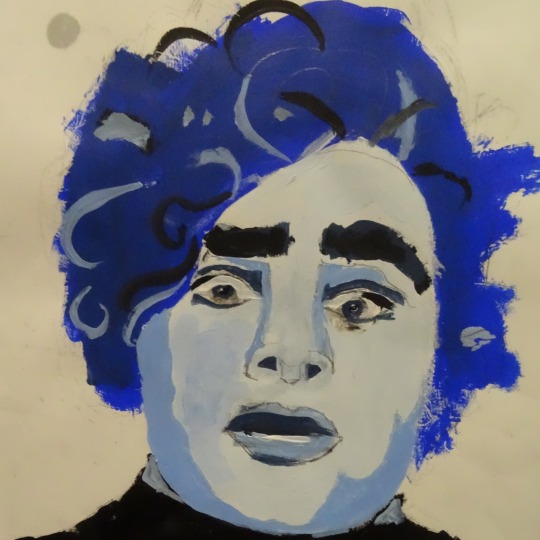
This week's artwork is from Fifth Year students, who produced monochrome portrait paintings inspired by Pablo Picasso's Blue Period. Following this, they ventured into creating Batik artworks. Batik is a traditional Indonesian art form that involves applying wax and dye to fabric to create beautiful designs. The outcome was very successful and takes a lot of skill—let's take a moment to admire their fantastic work! The full gallery is available by CLICKING HERE.
0 notes
Text
TYPES OF SURFACE DESIGN IN 2024 WORLD

Surface design refers to the application of decorative elements to the surface of a material, enhancing its visual appeal and texture. There are various types of surface design techniques, each with its unique methods and applications. Here are some common types of surface design:
Write FAQs Based On Surface Design
Textile Surface Design:
- Printing: Techniques such as screen printing, block printing, digital printing, and heat transfer can be used to apply patterns and designs onto fabrics.
- Dyeing: Various dyeing methods, including tie-dye, batik, shibori, and dip-dyeing, can be employed to add color and patterns to textiles.
- Embroidery: This involves embellishing fabric surfaces with stitched designs using threads, beads, or other materials.
Graphic Design:
- Digital Graphics: Computer-aided design (CAD) software is used to create digital graphics for surfaces, such as wallpapers, digital prints on textiles, and other decorative applications.
- Decals and Transfers: Applying pre-designed decals or transfers onto surfaces, including ceramics, glass, and metals.
Wall Surface Design:
- Wallpaper: Traditional or digital wallpapers come in various patterns, textures, and colors to enhance the aesthetic appeal of walls.
- Wall Murals: Large-scale, hand-painted or digitally printed murals can transform a wall into a work of art.
- Ceramic Surface Design:
- Glazing: The application of glazes to ceramics before firing, with techniques like dipping, brushing, and spraying, to achieve different surface finishes.
- Sgraffito: Scratching through layers of slip or glaze to reveal contrasting colors or the underlying surface.
Wood Surface Design:
- Wood Carving: Intricate designs can be carved into wood surfaces, creating texture and patterns.
- Inlay and Marquetry: Adding decorative elements by embedding contrasting materials into the surface of the wood.
Metal Surface Design:
- Etching: Using chemicals or tools to create patterns or designs on the surface of metal.
- Patination: Treating metal surfaces with chemicals to induce color changes or textures.
- Paper Surface Design:
- Paper Cutting: Intricate designs are cut into paper to create patterns or images.
- Collage: Layering different paper elements to create visually interesting compositions.
- Concrete Surface Design:
- Stamped Concrete: Patterns are stamped onto freshly poured concrete to create textures and designs.
- Staining: Applying color stains to concrete surfaces to achieve different hues and effects.
- Leather Surface Design:
- Embossing: Creating raised patterns or designs on leather by pressing or stamping.
- Tooling: Using specialized tools to carve intricate designs into the surface of leather.
- Glass Surface Design:
- Etching: Similar to metal etching, chemicals or abrasive techniques are used to create frosted or patterned designs on glass surfaces.
- Fused Glass: Layering and fusing different pieces of colored glass to create unique patterns and textures.
- Plastic Surface Design:
- Molding: Creating textured or patterned surfaces during the molding process for plastic products.
- Film Application: Applying decorative films or laminates to plastic surfaces for added visual appeal.
- Floor Surface Design:
- Floor Inlays: Integrating different materials, such as wood or tile, into flooring to create decorative patterns.
- Stenciling: Applying paint or other materials through stencils to create patterns on floors.
- Digital Surface Design:
- Generative Design: Using algorithms and computer programs to create intricate and often complex designs.
- Augmented Reality (AR) Surfaces: Interactive digital elements overlaid on physical surfaces, often used for immersive experiences.
- Stone Surface Design:
- Engraving: Carving designs or patterns into stone surfaces using tools or abrasive techniques.
- Polishing: Enhancing the natural patterns and colors of stones through polishing processes.
- Mixed Media Surface Design:
- Combining multiple materials: Using a combination of materials like fabric, paper, metal, and others to create eclectic and textured surfaces.
- Assemblage: Creating surfaces by assembling various objects and materials into a cohesive design.
- Bio-Fabrication Surface Design:
- Living Surfaces: Incorporating living organisms like moss or algae into design elements for sustainable and eco-friendly surface treatments.
- Biodegradable Materials: Using materials that decompose naturally over time, contributing to environmental sustainability.
- Digital Fabrication and 3D Printing:
- Additive Manufacturing: Creating intricate surface designs layer by layer using 3D printing or other digital fabrication techniques.
- Parametric Design: Utilizing algorithms to generate designs with variable parameters, resulting in complex and customizable surface patterns.
- Concrete Stenciling:
- Using stencils to apply patterns, images, or textures onto concrete surfaces, often seen in outdoor spaces like patios and sidewalks.
- Digital Embroidery:
- Employing computerized embroidery machines to create intricate and detailed designs on fabric, allowing for precise and complex patterns.
- Laser Cutting:
- Using laser technology to cut or engrave intricate patterns onto various materials such as wood, acrylic, fabric, and leather.
- Bamboo Surface Design:
- Utilizing the natural characteristics of bamboo, such as its grain and texture, to create decorative patterns through methods like burning, carving, or staining.
- Metal Leafing:
- Applying thin sheets of metal (such as gold leaf or silver leaf) onto surfaces for a luxurious and reflective finish.
- Digital Projection Mapping:
- Projecting dynamic digital images onto surfaces to create immersive and interactive experiences, often used in art installations and events.
- Tyvek Art:
- Exploring surface design using Tyvek, a synthetic material known for its durability, through techniques like folding, cutting, and heat manipulation.
- Sandblasting:
- Using abrasive materials propelled at high speed to etch or texture surfaces, commonly applied to glass, stone, or metal.
- Tape Art:
- Creating intricate designs by applying colored tapes directly onto surfaces, allowing for temporary and dynamic visual enhancements.
- Hydro Dipping (Water Transfer Printing):
- Submerging objects into a water bath with a floating layer of printed designs, enabling the transfer of the design onto the surface of the object.
- Resin Art:
- Using epoxy resin to create glossy and three-dimensional surfaces with embedded pigments, objects, or textures.
- Natural Surface Design:
- Incorporating elements from nature, such as leaves, flowers, or bark, directly onto surfaces through techniques like eco-printing or botanical printing.
- Digital Wallcoverings:
- Customizing and printing large-scale wallcoverings digitally, allowing for intricate patterns, high-resolution images, and unique designs.
- Bio-Mimicry Surface Design:
- Drawing inspiration from nature to create designs that imitate natural patterns, textures, or organic structures.
- Smart Surfaces:
- Integrating technology into surfaces to create "smart" features, such as responsive lighting, interactive displays, or surfaces that change color or texture based on external stimuli.
- Flocking:
- Applying small fiber particles (flock) to adhesive-coated surfaces, creating a velvety or textured finish. This technique is often used on fabrics, paper, or even plastic.
- Concrete Acid Staining:
- Using acid-based chemicals to react with the minerals in concrete, resulting in unique and variegated colors on the surface.
- CNC Routing:
- Employing computer numerical control (CNC) machines to precisely cut, carve, or engrave intricate patterns into various materials like wood, plastic, or metal.
- Kinetic Surfaces:
- Designing surfaces that can move or change dynamically, creating kinetic art installations or functional elements with changing patterns.
- Photomontage and Collage:
- Creating visual compositions by combining photographs or cutouts from various sources to form a cohesive design on surfaces like paper or canvas.
- Carbon Fiber Weaving:
- Utilizing the weaving technique with carbon fiber materials to create lightweight and strong surfaces, often used in high-performance applications.
- Cork Surface Design:
- Using cork as a material for surface treatments, which can include printing, staining, or shaping to enhance its natural characteristics.
- UV Printing:
- Employing ultraviolet (UV) light to cure or dry inks on surfaces quickly, allowing for vibrant and durable prints on various materials.
- Marbling:
- Floating and manipulating pigments on the surface of a liquid bath before transferring the design onto paper, fabric, or other materials.
- Smoke Firing (Raku Pottery):
- Exposing pottery to smoke during the firing process, creating unique and unpredictable surface patterns through the interaction of smoke and clay.
- Capiz Shell Inlay:
- Incorporating thin, translucent shells from the windowpane oyster (Capiz) into surfaces, often used in decorative items and furniture.
- Spray Painting:
- Applying paint using aerosol spray cans, allowing for a quick and even distribution of color on surfaces like walls, canvases, or objects.
- String Art:
- Creating geometric or abstract designs by arranging and affixing threads or strings to a surface, often in conjunction with nails or pins.
- Magnetic Surfaces:
- Integrating magnetic materials into surfaces, allowing for the attachment of magnetic elements or interactive features.
- Solar Printing:
- Using sunlight to create photographic prints on surfaces coated with light-sensitive materials, often resulting in cyanotype or sun print designs.
- Thermal Printing:
- Applying heat to special paper or materials to produce images or patterns, commonly used in receipt printers and certain art applications.
- Velvet Finishes:
- Achieving a soft and plush texture on surfaces through techniques like velvet flocking, fabric application, or specialized finishes.
- Mirror Mosaics:
- Creating intricate patterns by arranging small mirror pieces to form a mosaic on surfaces, adding reflective and dynamic qualities.
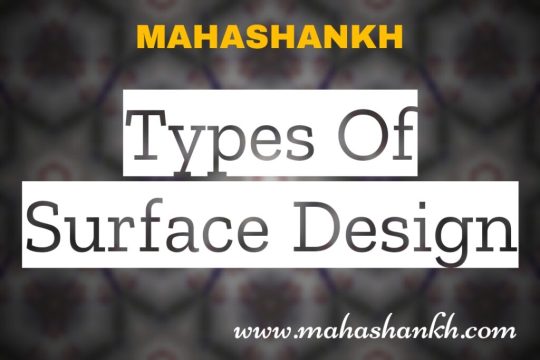
TYPES OF SURFACE DESIGN
Write FAQs Based On Surface Design
What is surface design?Surface design involves enhancing the appearance and texture of various materials through decorative techniques and artistic applications.What are some common materials used in surface design?Common materials include textiles, paper, wood, metal, glass, ceramics, concrete, plastic, and more.How is digital surface design different from traditional methods?Digital surface design involves using computer-aided tools and technologies, while traditional methods rely on manual techniques like printing, painting, and carving.Can surface design be applied to 3D objects?Yes, surface design can be applied to 3D objects through techniques like painting, carving, and various coatings.What is the significance of texture in surface design?Texture adds tactile and visual interest to surfaces, creating a unique and dynamic user experience.How does one get started with textile surface design?Getting started involves learning techniques like printing, dyeing, and embroidery, often through courses, workshops, or self-study.What is the difference between surface design and interior design?Surface design focuses on enhancing the appearance of materials, while interior design encompasses overall spatial planning and aesthetics.Can surface design be applied to outdoor spaces?Yes, surface design can be applied outdoors through techniques like concrete stenciling, murals, and landscaping.What is the role of color theory in surface design?Color theory guides the selection and combination of colors, influencing the visual impact and emotional response to surface designs.Are there sustainable surface design practices?Yes, sustainable practices include using eco-friendly materials, minimizing waste, and considering the life cycle of products.What is the difference between patination and oxidation in metal surface design?Patination is a controlled process to achieve specific colors, while oxidation refers to the natural corrosion of metal over time.Can surface design be applied to digital interfaces?
Yes, digital surface design is relevant in creating user interfaces, websites, and applications, focusing on visual elements and user experience.How is bio-mimicry used in surface design?Bio-mimicry involves imitating natural patterns and forms, bringing elements from nature into surface design for aesthetic and functional purposes.What tools are commonly used in wood surface design?Tools include carving tools, sandpaper, stains, and finishes for techniques like carving, inlay, and wood burning.What is the purpose of surface design in packaging?Surface design on packaging enhances product visibility, communicates brand identity, and attracts consumer attention.Can surface design be used for creating custom wallpapers?Yes, surface design plays a crucial role in creating unique and customized wallpapers with various patterns and textures.How does one create a seamless pattern in surface design?Seamless patterns are created by ensuring that the edges of the design align seamlessly when repeated, often using digital tools.What is the role of lighting in showcasing surface design?Lighting enhances the visibility and appreciation of surface design details, emphasizing textures, colors, and patterns.Is 3D printing used in surface design?Yes, 3D printing can be employed to create intricate and three-dimensional surface designs on various materials.What are the different types of embroidery stitches used in textile surface design?Common stitches include satin stitch, chain stitch, and French knots, each contributing to different textures and patterns.How can surfaces be designed for acoustics in interior spaces?Materials with specific textures and compositions can be chosen to absorb or diffuse sound, contributing to better acoustics.What is the role of CNC routing in surface design?CNC routing enables precise cutting and carving of intricate patterns on materials like wood, plastic, and metal.Can surface design impact a brand's identity?Yes, surface design on products, packaging, and marketing materials can significantly influence and reinforce a brand's identity.What is the significance of negative space in surface design?Negative space, or empty areas, is essential for creating balance and visual interest in surface designs.How does one create a distressed or aged look in surface design?Techniques such as sanding, distressing, and applying specific finishes can give surfaces an aged or weathered appearance.Can surface design be temporary or removable?Yes, techniques like decals, removable wallpapers, and temporary coatings allow for surface designs that can be changed or removed easily.What role does psychology play in color selection for surface design?Colors can evoke specific emotions and responses, making color psychology crucial in selecting hues for surface designs.How can one protect surface designs from wear and tear?Protective coatings, sealants, and proper maintenance help preserve surface designs and extend their lifespan.What is the difference between hand-painted and digitally printed surface designs?Hand-painted designs involve manual application, while digital printing allows for precise and replicable designs using technology.Can surface design be used in landscape architecture?Yes, surface design principles are applied in landscaping through features like patterned pavements, murals, and artistic installations.What is the role of cultural influences in surface design?Cultural influences impact design aesthetics, motifs, and color choices, adding richness and diversity to surface design.Can surface design be used to create tactile maps for the visually impaired?Yes, tactile maps with raised surfaces and textures can be designed to provide spatial information for the visually impaired.How does one create a harmonious color palette in surface design?Harmonious color palettes are achieved by selecting colors that complement each other, often using color wheels and schemes as guides.Is surface design used in automotive interiors?
Yes, surface design is applied in automotive interiors through materials, textures, and finishes to enhance the overall aesthetic.What is the difference between matte and glossy finishes in surface design?
Matte finishes have a non-reflective surface, while glossy finishes are reflective, creating different visual effects and tactile sensations.How does one incorporate lighting effects in surface design?
Integrated lighting, backlighting, and reflective materials can be used to create dynamic and visually striking effects on surfaces.Can surface design be used in product prototyping?Yes, surface design is often incorporated into product prototypes to visualize and refine the final appearance.
Read the full article
#Abstractsurfacedesign#Colorexploration#Contemporarypatterns#Digitalsurfacedesign#Fabricmanipulation#Floralmotifs#GeometricPatterns#Hand-drawnmotifs#Mixedmediasurfaces#Organictextures#Patterncreation#Patterndesigninspiration#Printmaking#Repeatpatterntechniques#Repeatpatterns#Surfacepatternillustration#Sustainablesurfacedesign#Textileart#Textilesurfacedesign#urfacedesign#Vintagesurfacedesign
0 notes
Text
Textile Trends: A Journey through Fabric Weaves and Prints in Men's Short Kurtas
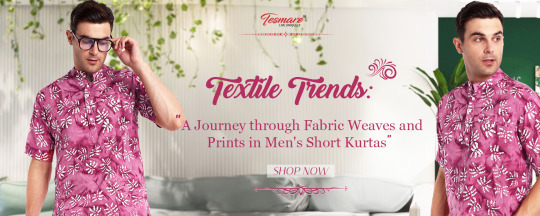
In the ever-evolving landscape of men's fashion, the intricate interplay of fabric weaves and prints has become instrumental in shaping individual style statements. This journey delves into the expansive tapestry of textile trends, revealing the symbiotic relationship between artistic heritage and contemporary allure. Iconic prints such as batik, kalamkari, ikat, block print, tie & dye, and the regal Banarasi weave narrate stories of cultural richness and timeless elegance.
The age-old craft of batik, the narrative storytelling of kalamkari, the bold dynamism of ikat, the intricate precision of block print, the playful energy of tie & dye, and the opulent allure of Banarasi silk collectively form a kaleidoscopic array of choices.
At Tesmare, this narrative comes to life as we curate a wide range of men's short kurtas, each a unique canvas adorned with these distinctive prints and weaves. Our collection pays homage to tradition while embracing the demands of modern fashion, offering men the opportunity to express their personal style through the diverse and captivating language of fabric. With Tesmare, the fusion of heritage and contemporary chic unfolds seamlessly, allowing individuals to don short kurtas that not only reflect their fashion sensibilities but also stand as testaments to the artistry woven into every fabric.
Dress to Impress: The Power of Prints in Men's Short Kurta Fashion
1. Batik Brilliance:
In today's dynamic world of men's fashion, the timeless allure of Batik Brilliance has emerged as a captivating trend, seamlessly blending tradition with modernity. The intricate art of batik, with its wax-resist dyeing technique, has transcended cultural boundaries to become a symbol of contemporary style in men's short kurtas. The vibrant and detailed patterns inherent in batik offer a fresh perspective, creating garments that resonate with the discerning tastes of the modern man. These short kurtas, adorned with batik brilliance, exude a unique charm that speaks to the rich heritage of craftsmanship while embracing the demands of current fashion sensibilities. The fusion of traditional batik motifs with trendy silhouettes has positioned this style as a standout choice, allowing men to make a bold and culturally resonant statement in today's ever-evolving fashion landscape. Batik brilliance not only enriches the visual appeal of men's short kurtas but also reflects a contemporary mindset that appreciates the artistry of the past in crafting a stylish present.
2.Kalamkari Chronicles:
Kalamkari, derived from the Persian words 'kalam' (pen) and 'kari' (craftsmanship), is a testament to intricate hand-painted or block-printed motifs. Kalamkari short kurtas bridge the gap between tradition and modernity with effortless charm. One of the remarkable aspects of Kalamkari short kurtas lies in their versatility. From subtle and sophisticated designs suitable for formal occasions to more vibrant and eclectic patterns for casual wear, Kalamkari effortlessly adapts to various style preferences, ensuring a diverse range of choices for the fashion-forward man. Kalamkari short kurtas allow modern men to make a distinct style statement. Whether it's a boardroom meeting, a cultural event, or a casual outing, the incorporation of Kalamkari adds an element of sophistication and individuality, setting the wearer apart in a crowd of conventional fashion choices.
3. Block Print Elegance
Block print short kurtas boast a versatility that caters to various tastes and occasions. From subtle and intricate motifs for formal settings to bolder and more vibrant patterns for casual wear, the adaptability of block printing allows men to curate a diverse range of looks, making it a staple in the modern wardrobe.
Block Print doesn't limit itself to traditional designs. Modern men's short kurtas with block prints often feature contemporary silhouettes, allowing wearers to embrace the best of both worlds. This fusion of old-world charm and modern cuts results in garments that are not only culturally rich but also inherently stylish.
4. Ajrak
Ajrak short kurtas, with their versatility, cultural richness, and sustainable ethos, become cherished pieces that withstand the test of changing fashion trends. Modern men are increasingly drawn to the authenticity and cultural depth that Ajrak brings, appreciating the craftsmanship and stories embedded in each print.
For casual wear, the versatile charm of Ajrak truly shines. Paired with jeans or chinos, an Ajrak-printed short kurta adds a touch of effortless style to everyday looks. The vibrant patterns and cultural resonance make it a standout choice for casual outings, infusing a dash of personality into relaxed settings.
Ajrak brings a touch of cultural elegance to the forefront. Whether it's a festive celebration, a cultural event, or a formal gathering, an Ajrak short kurta becomes a statement piece. Paired with traditional bottoms or tailored trousers, it exudes a refined sense of style suitable for a variety of occasions.
5.Dabu Print
Dabu print serves as a bridge between generations, connecting the modern man to the age-old traditions of craftsmanship. Dabu print's versatility shines through in its diverse design offerings. From geometric patterns to floral motifs and intricate figurative designs, Dabu-printed garments cater to a broad spectrum of tastes. This versatility allows men to express their individuality and embrace diverse styles within the framework of cultural authenticity.
One of the standout features of Dabu print is its adaptability to various fashion styles. Whether adorning a casual short kurta for a laid-back look or elevating formal wear with a Dabu-printed ensemble, the versatility of this craft allows it to seamlessly integrate into different facets of a modern man's wardrobe.
The use of natural dyes and the handcrafted nature of the process contribute to an eco-friendly approach to fashion. Modern consumers increasingly appreciate not only the aesthetic value of their clothing but also its ethical and environmental impact.
youtube
6.Shibori
Shibori in men's fashion introduces a unique dimension, offering garments that are not only visually compelling but also tell a story of meticulous craftsmanship. From casual shirts to sophisticated kurtas, the versatility of Shibori adapts seamlessly to various styles, bringing an air of sophistication to contemporary wardrobes. Each Shibori pattern carries a sense of individuality, as no two pieces are identical, emphasizing the personalized and artisanal touch that modern fashion enthusiasts increasingly seek.
7.Tie & Dye
Tie-dye short kurtas offer a playful and artistic touch, featuring bold and unpredictable patterns that create a visually striking impact. The technique's adaptability allows for a range of color combinations and designs, catering to diverse style preferences. These short kurtas seamlessly blend comfort and trendiness, making them ideal for casual and semi-formal occasions. Whether sporting subtle pastels or vibrant bursts of color, tie-dye short kurtas have become a staple for the modern man seeking an expressive and individualistic addition to his wardrobe. The resurgence of tie-dye in men's fashion highlights its ability to infuse joy, creativity, and a sense of free-spiritedness into contemporary clothing choices.
Indian Weaves Redefining Men's Short Kurta Fashion
1. Ikat Wonders:
In the evolution of men's fashion, Ikat has gracefully transitioned into a versatile and modern expression, particularly evident in the realm of men's short kurtas. Once rooted in traditional techniques involving intricate tie-dyeing and weaving processes, Ikat now dons a contemporary touch, making it a dynamic choice for the modern man. The beauty of Ikat lies not only in its visually striking patterns but also in its adaptability to various styles and occasions. The incorporation of Ikat in men's short kurtas brings forth a harmonious blend of heritage and contemporary aesthetics. The precision and complexity of Ikat weaving add a layer of sophistication to the garment, making it suitable for both casual and semi-formal settings. The versatility of Ikat has made it a go-to choice for men who seek to infuse their wardrobes with cultural richness without compromising on the demands of modern fashion.
2.Dobby
Dobby fabric has gracefully found its place in the modern men's wardrobe, especially in the realm of short kurtas. Dobby refers to a woven fabric characterized by small geometric patterns or textures created through a special weaving technique. The intricate weave gives the fabric a three-dimensional quality, elevating the overall aesthetics of the short kurta. The versatility of dobby fabric allows it to seamlessly transition between casual and semi-formal occasions, making it a versatile choice for the modern man's wardrobe.
Whether paired with jeans for a casual outing or combined with traditional bottoms for a more formal look, dobby short kurtas effortlessly cater to diverse style preferences. Moreover, the breathable and comfortable nature of dobby fabric adds to its appeal, ensuring that men not only look stylish but also feel at ease in various settings. The versatility, visual appeal, and comfort of dobby short kurtas collectively contribute to their popularity in the modern men's wardrobe, offering a refined and fashionable option that seamlessly blends tradition with contemporary flair.
3.Khadi
In the modern context, Khadi short kurtas have transcended their traditional associations and become versatile pieces suitable for various occasions. Whether paired with jeans for a casual look or combined with chinos for a semi-formal appearance, Khadi short kurtas offer a timeless aesthetic that seamlessly fits into the dynamic lifestyle of the modern man. The simplicity of Khadi aligns with minimalist fashion trends, making it a canvas for both traditional and modern designs. From subtle weaves to intricate patterns, Khadi short kurtas cater to diverse tastes, allowing men to express their individuality while embracing a sustainable and eco-friendly approach to clothing. Khadi short kurtas emerge as not just pieces of clothing but statements of conscious fashion choices.
4.Linen
Linen has become a quintessential and prized addition to the modern men's wardrobe, particularly in the form of short kurtas. Known for its breathability, lightweight nature, and distinctive texture, linen short kurtas offer a perfect blend of comfort and style. Linen, derived from the flax plant, possesses natural moisture-wicking properties, making it an ideal choice for warm weather. In the context of short kurtas, linen's relaxed drape provides a laid-back yet refined aesthetic, offering a versatile garment that effortlessly transitions from casual to semi-formal occasions. The fabric's crisp and textured surface adds a touch of sophistication, while its ability to keep the body cool makes it well-suited for various climates. Linen short kurtas are often favored for their ease of styling; they pair well with both traditional bottoms like churidars or contemporary choices such as jeans or tailored trousers. As men increasingly prioritize comfort without compromising on style, linen short kurtas have become a staple, reflecting a modern approach to classic attire. Whether worn during casual outings, festive celebrations, or even professional settings, linen short kurtas stand as a testament to the timeless elegance and practicality of linen in the contemporary men's wardrobe.Top of Form
5.Tangliya
As men increasingly seek unique and meaningful elements in their clothing, Tangliya stands as a testament to the enduring beauty of handmade craftsmanship in the ever-evolving world of style. The adaptability of Tangliya to modern silhouettes showcases its timeless appeal, connecting wearers to the artisanal traditions of the past while making a bold statement in today's dynamic fashion landscape.
6.Banarasi Opulence
Banarasi Opulence doesn't merely celebrate tradition; it reinvents it for the modern man. Short kurtas designed with Banarasi silk often feature contemporary silhouettes, allowing wearers to revel in the grandeur of cultural heritage while embracing a fashion-forward approach. For casual wear, Banarasi silk short kurtas offer a distinctive flair. Paired with jeans or chinos, these kurtas become a statement piece, infusing casual gatherings with an element of refined style. The sheen of the silk adds a touch of sophistication to everyday looks. In formal settings, Banarasi Opulence takes center stage. Short kurtas crafted from Banarasi silk become a sartorial choice that emanates elegance and refinement. Paired with tailored trousers or traditional churidars, they make a powerful yet understated statement at formal events.
Banarasi Opulence is particularly well-suited for special occasions. Whether it's a cultural celebration, a wedding ceremony, or a festive gathering, short kurtas adorned with Banarasi silk embody the grandeur and celebratory spirit of such events.
You May Also Like: Prints & weaves redefine men's kurta chic
A Guide to Hand Embroidery Styles in Men's Fashion
Kantha Hand Embroidery
Modern men's short kurtas embellished with Kantha embroidery showcase a harmonious blend of tradition and contemporary style. The delicate yet intricate patterns not only elevate the aesthetic appeal of the garment but also narrate a story of skilled craftsmanship passed down through generations. The versatility of Kantha embroidery allows for a diverse range of designs, from subtle and sophisticated motifs to more elaborate and vibrant patterns. The embroidery often adorns collars, plackets, sleeves, or hems, enhancing the overall design of the kurta. The simplicity of the running stitch creates a textured surface, giving the garment a tactile and three-dimensional quality. Kantha-embroidered short kurtas are not just pieces of clothing; they are wearable art that transcends fashion trends. Whether worn casually for everyday elegance or dressed up for special occasions, Kantha-embroidered short kurtas stand out as versatile wardrobe staples.
Lucknowi Embroidery
The charm of Lucknowi embroidery lies in its versatility. Modern short kurtas adorned with Lucknowi craftsmanship effortlessly bridge the gap between traditional and contemporary styles. The subtle and refined intricacies of the embroidery add a layer of sophistication to the garment, making it suitable for a range of occasions. Lucknowi-embellished short kurtas serve as a wardrobe staple for the discerning modern man, offering a perfect blend of comfort and style. The lightweight and breathable nature of the embroidery make these kurtas ideal for various seasons and occasions, from casual outings to semi-formal events. Thus, Lucknowi embroidery in the modern men's wardrobe adds a touch of grace and sophistication, weaving together the threads of tradition and contemporary fashion seamlessly.

We are also Available on : Ajio , Amazon , Flipkart , Myntra
Mirror work
Mirror embroidery in modern men's wardrobes, specifically in short kurtas, is a celebration of heritage meeting contemporary style. It transforms the garment into a canvas of reflections and intricate detailing, offering wearers a unique and distinguished look that seamlessly navigates between cultural traditions and the demands of today's fashion sensibilities.
The versatility of mirror embroidery allows it to seamlessly integrate with various fabrics and designs, making it suitable for both casual and semi-formal occasions. Whether adorning the neckline, cuffs, or scattered across the body of the kurta, the mirrors catch and reflect light, imparting a dynamic and eye-catching dimension to the attire.
Sindhi embroidery
In the context of modern men's fashion, Sindhi embroidery on short kurtas adds a unique and personalized touch, transforming a simple garment into a wearable work of art. The vibrant threads and reflective mirrors used in Sindhi embroidery contribute to the garment's distinctiveness, making it a statement piece suitable for both casual and semi-formal occasions. Whether adorning the collar, cuffs, or front placket, Sindhi embroidery adds a touch of regality and individuality to the overall look. Furthermore, Sindhi embroidery in modern men's short kurtas serves as a cultural bridge, connecting wearers to the rich traditions and artistic heritage of the Sindh region.
Sujini (Bihar)
Sujini embroidery brings a unique and culturally rich touch to contemporary men's fashion. This intricate embroidery technique involves colorful threadwork meticulously stitched onto fabric, often creating geometric patterns and floral motifs. The vibrant colors and intricate stitches create a visually appealing and distinctive aesthetic, making these short kurtas stand out in the fashion landscape. The adaptability of Sujini to short kurtas allows for a versatile range of styles. Whether it's a casual day out or a festive occasion, the detailed embroidery adds a touch of sophistication and cultural richness. The embroidery can be featured on various parts of the short kurta, such as the neckline, cuffs, or hem, providing designers and wearers creative flexibility in incorporating this traditional craft. In essence, Sujini embroidery in modern men's short kurtas is a celebration of culture, craftsmanship, and timeless style.
Applique Work
Short kurtas adorned with Appliqué Bhuj embroidery become more than just clothing; they become a manifestation of heritage, craftsmanship, and a unique sartorial expression in the diverse tapestry of the modern men's wardrobe. As fashion enthusiasts increasingly seek personalized and culturally resonant elements in their clothing, Appliqué Bhuj embroidery stands as a distinguished choice, bridging the gap between tradition and the dynamic demands of modern fashion.
Conclusion:
Short kurtas for men have transformed into a captivating fusion of traditional artistry and contemporary style, seamlessly marrying heritage with modern fashion. Exploring the diverse landscape of fabric weaves and prints provides men with a multitude of options to express their style and confidence in professional wear. These textile trends reveal that the short kurta is more than just clothing; it's a narrative, reflecting a man's appreciation for his heritage and his journey in the contemporary fashion scene. Tesmare proudly presents a wide array of short kurtas, featuring an extensive range of prints and weaves to suit every discerning taste and individual story.
We are also Available on : Ajio , Amazon , Flipkart , Myntra
#kurta for men#stylish kurta for men#buy kurtas online#menswear#embroidery#khadi kurta online#Youtube
0 notes
Text

What is Batik Painting:
Batik is a very old traditional art. It is basically an Indonesian technique of drawing cloth and making it resistant using wax.
Batik paintings are found all over the world but mainly in Asia & Africa.
History of Batik:
Batik is a very old wax cloth design. Batik painting started from the era of Ramayana. Artists of that era painted the story of Ramayana on cloth through batik painting. The artisans then evoked the environment of the Javanese kingdom through batik. The batik art of Java was of very high quality. Later, Santiniketan in West Bengal became famous for batik art. The artists here depict the images of ancient gods and goddesses on cloth through batik painting. Modern artists again draw their thoughts in the rows they create through batik. Shantiniketni batik is famous all over the world.
Making Technique:
For batik painting, the quality of the fabric needs to be emphasized because synthetic fabrics are not very suitable for batik. Batik requires best quality silk, khadi silk or white cotton fabric. First the cloth should be washed very well so that there is no starch. First sketch with pencil on white cloth. Then melt the wax and apply it on both sides like a wax painting with a brush. Then it’s time to paint. The cloth has to be dyed again and again to dye it in different colors. The whole cloth should be dried in the shade. Finally, it’s time to remove the wax, to remove the wax, put the whole cloth in boiling hot water and automatically all the wax will be removed. After ironing with new starch, our batik painting saree will be ready to wear. Because of such a long process, batik painting sarees are so expensive.
#handemboidered_bags
#regularuseslingbag
#cottonbagonline
#jentsbag
#cottonjutebags
#juteslingbags
#manufacturer
#retailers
#wholesalers
#ladieshandbag
#unisexslingbag
#jutehandbags
#cottonshoulderbags
#cottonjutebags
#jutebagsforladies
#cottonslings
#canvastotebag
#handpaintedtotebag
#ssrini
#adrishcreative
0 notes
Text
Cushion Covers - Are Decorative Furnishings That Stylize The Sofas, Couches
By using impeccable cushion covers you can bring life to your dining room, bedroom or any other place where you have used these fine-looking, decorative or embroidered creative pieces of work. With these rattling covers you can create a different feel and ambiance as these have various patterns, fabric or styles. For example, you can pick a whole range of contemporary or traditional cushion covers if your whole home décor theme is that.
From natural to bright color and the one having amazing patterns, styles, you will find all types. So to buy the one that fits into your home décor let's first of all have a look at the broad categories. Broadly these can be categorized by material, style, pattern and usage. Further these categories have various types. So let's discuss them one by one.
The rich coverings of the cushion have emerged as indispensable accessories of the interiors. Best Handwoven Cushion Covers are decorative furnishings that stylize the sofas, couches, chairs and even outdoor lounges with their diverse shapes, colors and designs. The smooth surface and the soft sheen of the covers offer a gentle feel when touched. Prepared from fabrics of different textures, the cushion covers with impressive hand embroideries and embellishments are engaging works of art. They are the legacies of the handicraft traditions of India. The cushions look cool and comfy when draped with the bright covers
The embroideries of various regions of India make their glowing display in the cushion covers. Exotic threadworks are woven into mesmerizing tapestries from ethnic to contemporary. The beautiful handcrafted works make for covetous home furnishings. The common fabrics used are silk, cotton, jute, rayon, polyester, organza, velvet and more. The shapes vary from typical squares and rectangles to circles, ovals and polygons. Images of gods and goddesses, animals, birds, flowers, leaves and human beings are embroidered. Inspirations from epics, mythologies and court scenes are encapsulated into impressive designs. Various geometric patterns are also crafted on the covers. The panorama of everyday life is also painted with the needles and threads on the fabrics.
Bright hued woolen threads are carved on the cushion covers in a medley of designs. Known as 'crewel embroideries', the intricate wool work involving various stitching styles makes for some extraordinary coverings of the cushions. Buy Block-Printed Cotton Cushion Covers that are very popular nowadays for their affordable price rates. They breathe in life to the interior decors with their bright colors and ornamentation. Among the various fabric paintings, batik painting, tie-and-dye and silk-screening are found in vogue in the home furnishings.
0 notes
Text
Fashionable Men's Batik Brown Short Sleeve

Vendor: Batik Shirt
Type: Apparel & Accessories
Price: 69.00
<!-- td {border: 1px solid #ccc;}br {mso-data-placement:same-cell;} -->
Find your perfect shirt with our Batik Brown Short Sleeve for men. This shirt has a modern regular fit and is made from the highest quality Indonesian cotton. Perfect for any occasion, this shirt can be worn untucked or tucked in and will go with any type of pants. Side splits are designed to be comfortable when worn untucked or tucked in. Perfect for any occasion, this shirt will be your go-to piece of apparel at the office or when you're out running errands. Grab yours now!atik is a traditional Javanese painting technique and art form which has been practiced for hundreds of years. In modern times, the word batik is used to describe the wax-resist dyeing technique used in the manufacture of textiles and other articles. This shirt is made from the highest quality Indonesian cotton, available in a variety of colors and patterns!
The cuffs are finished with traditional batik-making.
Wash separately to maintain the quality of the fabric.
Use a mild detergent and do not spin in the washing machine while drying.
Do not bleach or iron at high temperatures on this garment.
from Batik Shirt https://ift.tt/lI8py7X
0 notes
Text
All About African Prints II
Àdìré (ah-di- reh)/ Tye and Dye
Adire literally translates as "tye and dye". In SouthWest Nigeria-in places such as Abeokuta and Oshogbo, Adire played a role in economic development. It was considered a substantial way for women to make a living and sustain their families. Dyes were being imported into the country and fabrics are being exported to other countries. It has also serves as point of contact for investors and played a role in the empowerment of Nigerian citizens. (Ajoku 2021).
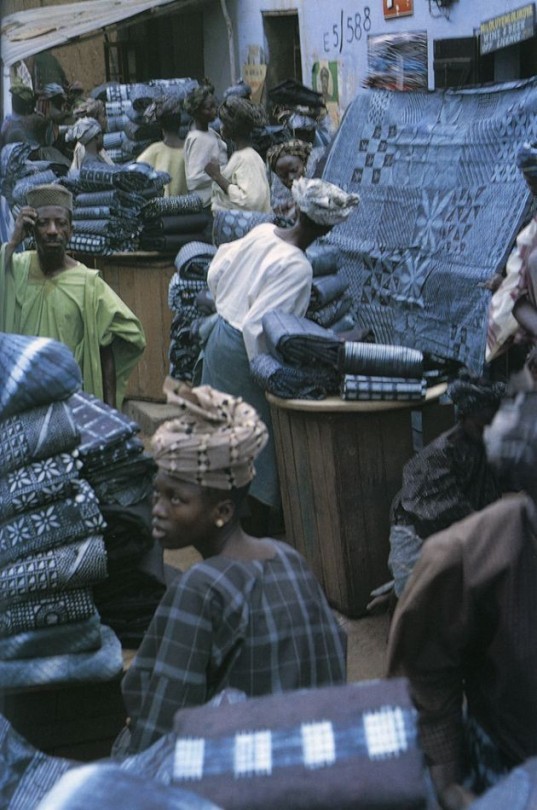
Source: Pinterest
The Traditional Adire making technique dates back to about lOOyears ago. It was made using cassava paste and chicken feathers the dye mainly used is pounded indigo leaves in combination with solution from cocoa pod ash ( Picton 2006) Starch was used as the resisting agent.

Women making Tye-dye fabrics locally
Batilk
Now mordern fabric printing technique by adding chemicals such as, caustic soda and hydrosulphite to the dye bath to infuse it with the fabric without fading over time. Another form of adire is the wax resist which is also known as Batik.

Woman making Batilk-inspired print
Tye-Dye Vs Batilk (Differences)
While batik fabrics focus on precise melted wax painting, tie-dye is all about experimentation and spontaneity. Rather than painting your fabric, you fold, scrunch, and tie your fabric into a tight ball with a rubber band.
Adire textile has became popular not only to Nigerian but in other countries such as Japan, Brazil, China, etc. (Ajoku, 2021)
Nowadays, machines make these prints more polished and refined. this does not make it an less of a relevant art form
1 note
·
View note
Photo

r-r-ruban vivi
installation
Cube Gallery
winter 2022-2023
Lied Art Center
Whitworth University
300 W. Hawthorne Road
Spokane, WA 99251
Spokane Public Radio Feb. 2, 2023: r-r-ruban vivi… LINK
Inspiration for this installation comes from holiday decorations I observed when studying textile arts in Nigeria.
I earned my MFA in Painting from Yale and had been imagining an artist's residency in Africa. The connection I saw between painting and Africa was dyeing, and large painterly batiks from Nigeria drew me in. In Nigeria I saw how textiles are prized, and how self-presentation, often in elaborate dress, is important. You purchase a few yards of fabric - maybe a hand-printed batik - and bring it to a tailor who sews your outfit to measure.
And I noticed, too, that fabric was Nigeria's answer to the strings of lights that outline shop windows in the U.S. during winter holidays. In December in Nigeria solid-color yardage in red, green, and white is twisted, cinched, and stretched to create festive holiday decor on building fronts. In January this is dismantled - the fabric's folded and put away for next year.
For my installation, r-r-ruban vivi, I borrowed the idea of yardage from Nigerian holiday decor for my "material" and brought this into a fully 3D format where swathes of fabric swing through space like vibrant paintstrokes. The solid and striped lengths include satins, iridescent organza, and gold tissue lame in a color palette that's energizing and calming, too. Lamps illuminate the installation from about 7am-midnight and give a lantern-like effect when the sun goes down. I like to drive by as it's getting dark to enjoy how the view of r-r-ruban vivi changes as I move around it.
#installationart#liedartcenter#spokane#spokanewa#textileinstallation#facultybiennial#public✴projects#MariaOgedengbe
0 notes
Text

Home ~ batik painting ~ American artist Janet Searfoss https://www.janetsearfossbatiks.com
“WAX PAINTING is an art form dating back 2,000 years. Wax Paintings were found in the tombs of Pharaohs and called "mummy portraits". . The Indonesian word “Batik” means “wax writing”. In our modern day society wax resist art is usually referred to as “Batik”. The process is also referred to as “ROZOME” in Japan. The Japanese version of batik consists of direct application of dyes and wax on silk using silk painting techniques. The Indonesian technique, usually uses cotton or silk and the wax is melted and applied using brushes or tjanting tools to the areas that are to remain that particular color then cloth is immersed into dyes and only the unwaxed areas accept the dye. This wax resist process of waxing out areas and dipping is repeated numerous times. Tjanting tools are made of a wooden shaft with a metal reservoir with a tiny metal tube that allows wax to flow onto the fabric leaving lines or dots. The waxed areas get bent and the cracks or fractures allow the dye to penetrate leaving fine lines of color referred to as “crackle” or “ice”. Janet refers to the crackle as the thumbprint of batik. Janet combines the BATIK techniques with painting techniques to create her own original style which she refers to as BATIK PAINTINGS. Some of the batiks incorporates pastels, silk screening with fabric paint, acrylic paint, colored pencil and other mix media. Janet will incorporate other art material necessary to create the image she visualizes.” The wax is removed through ironing the fabric between newsprint which absorbs the wax. The finished batik is drymounted onto foamcore, matted and framed.” ~ from her website above
17 notes
·
View notes
Text
The basic concept and operation method of fabric printing
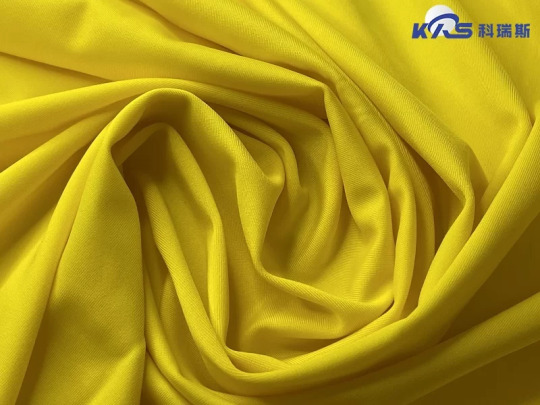
Fabric printing is the process of making dyes or paints create patterns on fabrics.
China used letterpress printing to print pottery patterns as early as the Neolithic Age. It was used for seals and clay seals in the Zhou Dynasty, and even in the Spring and Autumn Period and the Warring States Period, letterpress printing has been used for fabrics, and it reached a high level in the Western Han Dynasty. Mawangdui, Hunan The unearthed printed colored yarn is the product of the combination of three letterpress overprinting and color painting.
1. Basic concept of fabric printing
Printing: The process of printing flower patterns with certain color fastness on textiles with dyes or pigments.
2. Classification of printed materials
The objects of printing are mainly fabrics and yarns. The former attaches the pattern directly to the fabric, so the pattern is clearer. The latter is to print the pattern on the yarn aggregates arranged in parallel, and after weaving, the fabric has a hazy style pattern effect.
3. The difference between printing and dyeing
1) Dyeing is to dye the dye evenly on the textile to obtain a single color. Printing is a pattern of one or more colors printed on the same textile, which is partial dyeing.
2) Dyeing is to make dyes into dye liquor and dye them on fabrics through the water as a medium. Printing uses paste as a dyeing medium, and dyes or pigments are mixed into printing paste and printed on the fabric. After drying, steaming and color development are carried out according to the nature of the dye or color so that it can be dyed or fixed. On the fiber, it is finally washed with soap and water to remove the paint and chemicals in the floating color and color paste.
4. Pre-printing treatment
Similar to the dyeing process, the fabric must be pretreated before printing to obtain good wettability so that the colorant can enter the fiber evenly. Plastic materials such as polyester sometimes need to be heat-set to reduce shrinkage deformation during printing.
5. Characteristics and methods of fabric printing
Fabric printing can be divided into screen printing, roller printing, thermal transfer printing, wood template printing, hollow-out printing, tie-dye, batik, splash-dye printing, hand-painted printing, etc.
Among them, there are two printing methods of commercial importance: screen printing and drum printing. Thermal transfer printing is relatively less important. Other printing methods that are rarely used in textile products such as traditional wood stencil printing, wax vale (ie wax proof) printing, yarn tie-dye printing, and resist printing.
Many textile factories mostly use screen printing and roller printing to print fabrics. Most thermal transfer printing done by printers is also printed in this way.
SUZHOU KRS is an industrial and trade integrated printed fabric manufacturer, which started in 2012. SUZHOU KRS has accumulated rich production experience and technology in this field, widely used in shoe material, high-end luxury car interiors, fashion fabrics, and so on. PRINTED FABRIC 08 is one of our products, you can click to view more details.
If you are interested in our products, please contact us as soon as possible.
Related news of printed fabrics
Several operating methods of fabric printing that you don't know 1
What is digital printing? What are the characteristics?
0 notes
Text
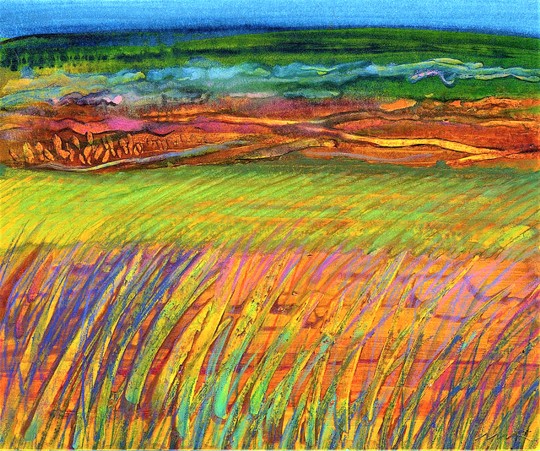

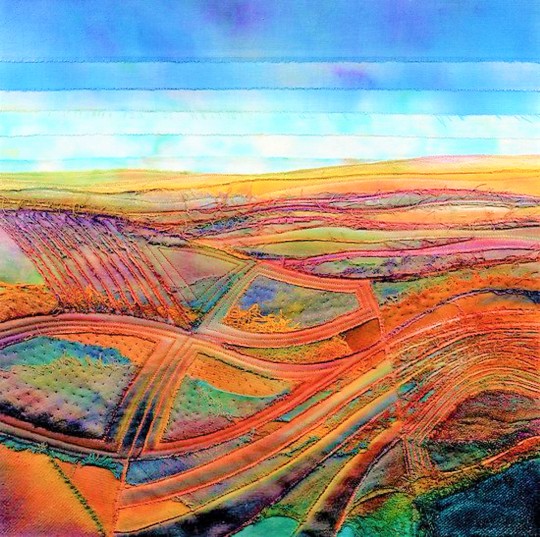
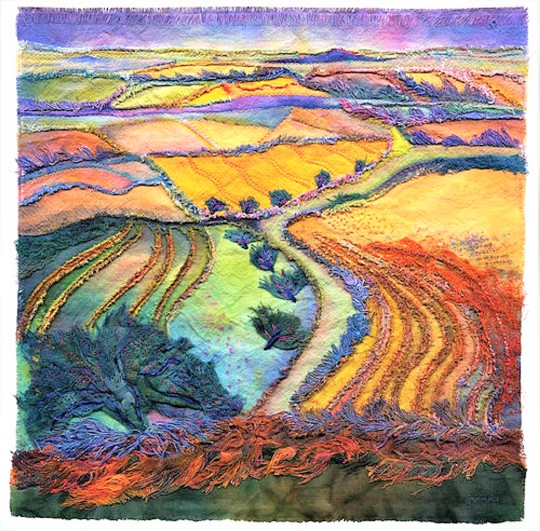
Stunning textile painting by Margaret M. Roberts
Recently, the network came across the work of the English judogeon and photographer Margaret M. Roberts. Unfortunately, I could not find any sensible information about her, but I can not help but share - she, in addition to very nice watercolor works, has absolutely unusual works with textiles, a kind of textile painting.
Maybe these works will inspire some of our masters :)
So, watercolors:
© https://www.livemaster.ru/topic/1101191-potryasayuschaya-tekstilnaya-zhivopis-margaret-m-roberts
For more, see -> Fabric-Batik-Paint-Dye blog on tumblr & Pinterest
1 note
·
View note
Text
Best Cotton Plazo Suits at Afsana Clothing
We Are One Of The Finest Women's Clothing Manufacturers. Every girl and woman always wants to seem different, especially at a party or on a special occasion. A suit is a perfect choice on such a day to look more beautiful, so wear it and make you happy and beautiful. When you wear this, everyone will be looking at you click Now
Wear this Beautiful Kurtaplazo set up your fashion sense. In this garment, you'll look smart and stylish while also enjoying the comfort of the 100 percent Cotton fabric. This is ideal for the festival season and for wearing to parties.
The Kurti provides excellent breathability and comfort This gorgeous Kurti will undoubtedly get you compliments for your sophisticated sense of Afsana clothing. Cotton plazo suit for women in a stylish new design.
The most comfortable outfit in the fashion world is Indian ethnic wear. You can simply transport any ethnic clothing. Salwar suits, in particular, and their modifications, are a popular fashion option among women.
Women's salwar suits are the most comfortable to wear. Many ladies and girls love to wear palazzo salwar suits to work or on a daily basis. Its length can be determined by the season. For summer, go sleeveless with no collars, and for winter, go full sleeves with a churidar.
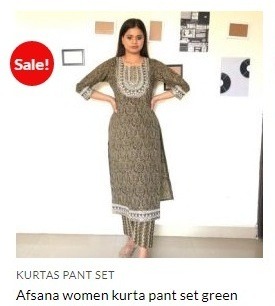
Plazzo Salwar Suit Designs now come in a wide range of styles:
• Kameez can be long or short, depending on personal preference.
• Salwar comes in a variety of styles, including tapering Patiala and Palazzo.
• With fitting or Bell Sleeves, the kameez can be collarless or mandarin collared.
• Kurtis come in a variety of styles, such as short, long, anarkali, and asymmetric.
• Salwar suit designs come in a variety of fabrics and cuts.
• Party wear might also include an embroidered or painted suit with a palazzo.
You can also use them to decorate your workplace or for events.
There are many different prints for palazzo salwar kameez on the market. Make a decision based on your personality. You can choose from flower prints or conventional block prints, for example. For fans of western-style kurtas, sophisticated digital prints are available.

The following are examples of palazzo Kurti prints available on the market:
• The most popular hand block prints are bagru prints, dabu prints, and ikkat.
• For lawn suits or designer suits, digital prints are also popular.
• Ladies' party ethnic attire includes tie-and-dye, bandhej, batik, and leheriya printed outfits.
• You may also get palazzo suits with leopard prints, zebra prints, large/small flower motifs, and colors online.
• Brocade fabric is making a comeback in various forms. Brocade silk lehengas and salwarkameez are very popular for party attire these days. With brilliant colors, brocade salwarkameez makes a terrific festive wear style. Many celebs have also been seen wearing brocade salwarkameez for a stunning ethnic appeal. If you don't want to go for a heavily embroidered style, these can be fantastic alternatives.
As the wedding season approaches, outfit you in the hottest ethnic party wear looks from other major celebrities.
#kurti#fashion#street style#afsanaclothing#suitsforwomen#kurticollection#girlsclothing#kurticollectionsonline#clothingbrand#suits#brand#womenswear#womenfashion#womansfashion#kurtisonline#kurtis#festivewear#partywear#shararasuit#afsanacollections#afsanaofficial#afsanaofficialdelhi#indianwear#anarkalisuits#shoponline#festiveseason#weddingseason#weddingguestoutfit#vocalforlocal#supportsmallbusiness
0 notes